Cheesy smiles, firm handshakes, and an uncomfortable amount of eye contact. While these might be tropes in business movies, they have little to do with real-life relationship marketing.
Instead, relationship marketing creates meaningful interactions that make your customers want to come back for more.
From full-blown loyalty programs to a simple punch card, a hand-written thank you note, or a custom-developed feature, it comes in many shapes and sizes.
In this guide, we’ll break down relationship marketing in simple terms, showcase real-life examples, and teach you how to implement your own effective strategy.
What is relationship marketing?
Relationship marketing is the art of turning first-time customers into loyal ones that come back time and time again — or stick around and upgrade their plans.
It can take many forms, from dishing out rewards to existing customers, creating tailored marketing campaigns to engage them, and more.
For obvious reasons, businesses with recurring revenue streams are the most involved. Think SaaS companies, utility companies, and B2B service providers.
But loyal customers aren’t just a boon for recurring revenue companies. Even retailers stand to gain a lot. Loyalty means customers will come back to your business again and buy more products.
What is an example of relationship marketing?
The loyalty programs of all major airlines are a great example of relationship marketing. They understand the value of winning over a customer for life.
It’s much more profitable to be consistently chosen for 100s of flights than to fight for price and attention with ads for each one.
JetBlue’s TrueBlue loyalty program puts it this way: “for your loyalty, we give you ours.”
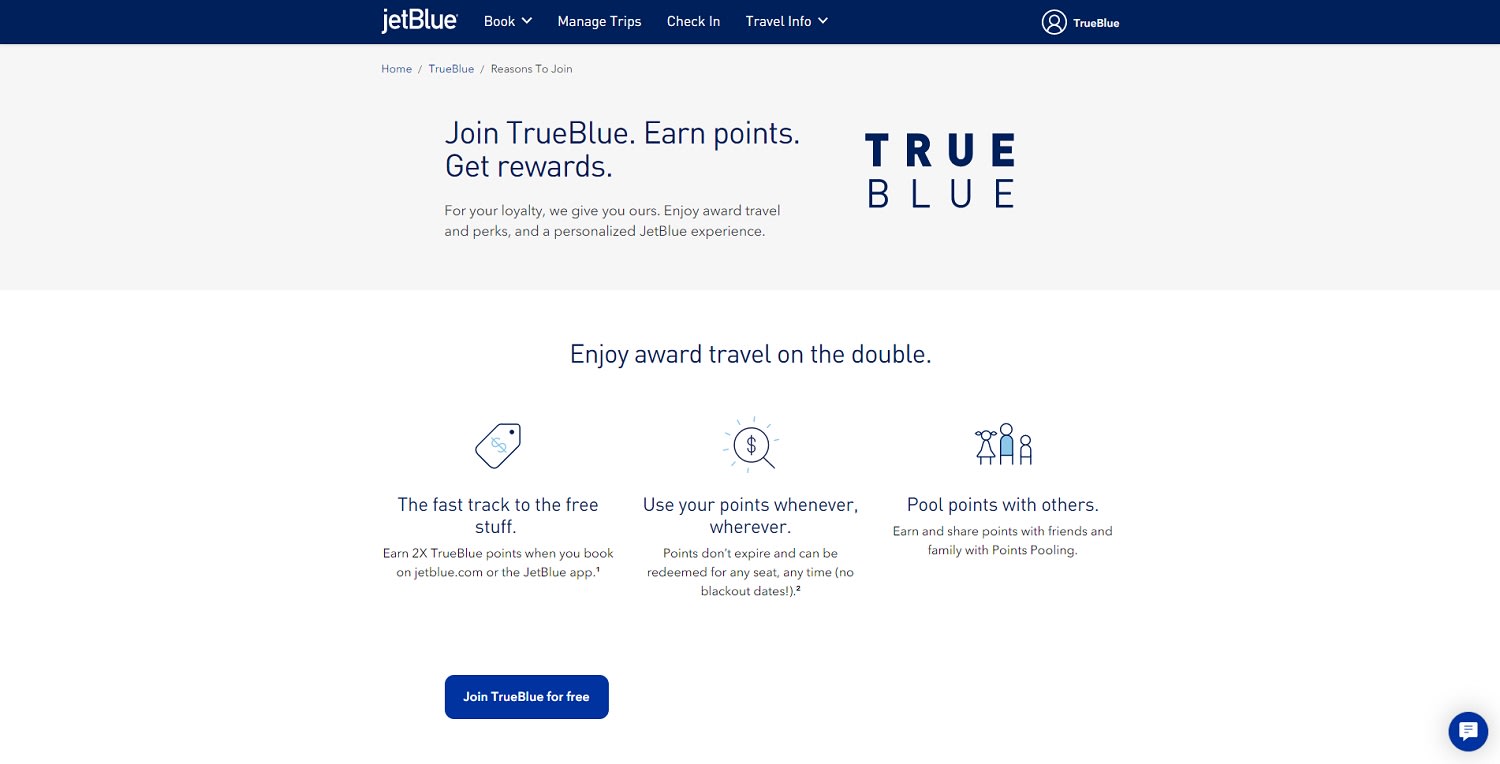
Treating existing, loyal customers with a little extra care in order to keep them with you for the long haul, is the essence of relationship marketing.
Of course, you don’t need to invest 1000s of dollars in an enterprise loyalty program. There are many effective relationship marketing tactics that only require a little elbow grease.
We’ll even share some eye-popping examples of these tactics in play, but first, let’s talk about why relationship marketing works so well.
What are the benefits of relationship marketing?
The main benefits of relationship marketing are the low barrier to entry and the high return on investment.
You don’t need a big budget to get started, and even earning a single loyal customer can mean significant earnings. A good customer relationship will pay dividends over the long term.
Here’s a simple table that shows why customer retention is so crucial:

Even if you’re paying a smaller sum in ads or discounts to get them back, you’ll still win big.
And that’s assuming that loyal customers and one-off customers spend the same. While in fact, loyal customers spend more.
According to a 2019 study, loyal customers will often choose your products over cheaper options.
- 36.5% of shoppers spend more on products when loyal to a brand.
- 59.3% of shoppers recommend brands they love to family and friends.
You’re probably a living example of this. Most of us have brands that we prefer to the point of paying more or shouting from the rooftops about how good they are — AKA tweeting.
Traditional marketing is too focused on the first sale. Transactional marketing — AKA only investing in acquisition — is a losing strategy long term.
Not only that, you can reach and engage existing customers more efficiently than new ones. The foundation for a fundamental relationship marketing strategy is email.
Email gets engagement rates 20–40 times higher than the average social media post or paid ad.
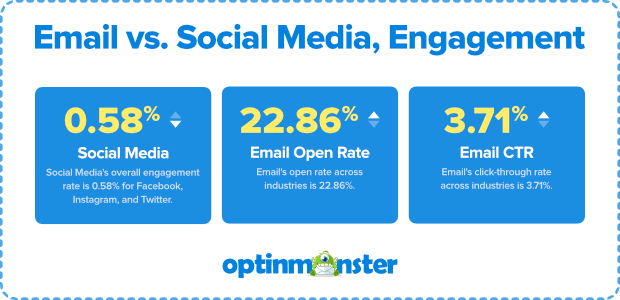
It’s also cheaper to reach out to existing customers than potential ones. You don’t need to pay for every click and conversion.
You can also reach existing customers through:
- SMS
- Push notifications
- Messaging apps (WhatsApp, Messenger, etc.)
- Your company blog
- App pages
Only for SMS messages do you have to pay for each “impression.”
When targeting a new audience of potential customers, you need to pay for ads, stunts, or invest in SEO or inbound marketing.
Customer loyalty isn’t something you should take for granted. Use customer relationship marketing to create a bond that lasts — and pays.
If it stops at the first sale, you need to add another step to your marketing funnel.
5 inspiring relationship marketing examples and tactics
The best way to learn relationship marketing is from successful examples. Let’s take a closer look at 5 world-class relationship marketers and their best tactics.
1. Using positive customer service interactions as a social media strategy
Zappos.com is legendary for its fast, responsive, and helpful customer service. If you visit its Twitter feed, you can easily find examples of positive interactions or even straight-up praise from customers.

But what’s the big deal? Most companies drop the ball here and prioritize cost-cutting. That’s a mistake you can’t afford to make.
Support is a crucial part of the customer experience. It’s an investment opportunity, not a cost center.
A 2020 study from Gartner reveals that delivering a positive “value enhancement” experience when facing a problem is crucial. It makes customers much more likely to stick around.

Not only that, but there’s a 97% chance you’ll get word-of-mouth recommendations and an 86% chance of increased wallet share.
Good support can turn a disgruntled customer into a loyal one in one fell swoop. A sizable piece of future revenue hangs in the balance every time a customer calls — make it count.A relationship marketing campaign coupled with poor service won’t be nearly as effective.
2. Actively recruiting customers to help develop the best product for them
Consumers stay loyal to brands that involve them in designing new products or services.
Lego took this concept and ran with it, creating a dedicated online community for people to submit their product ideas. It’s a great example of a relationship marketing program.
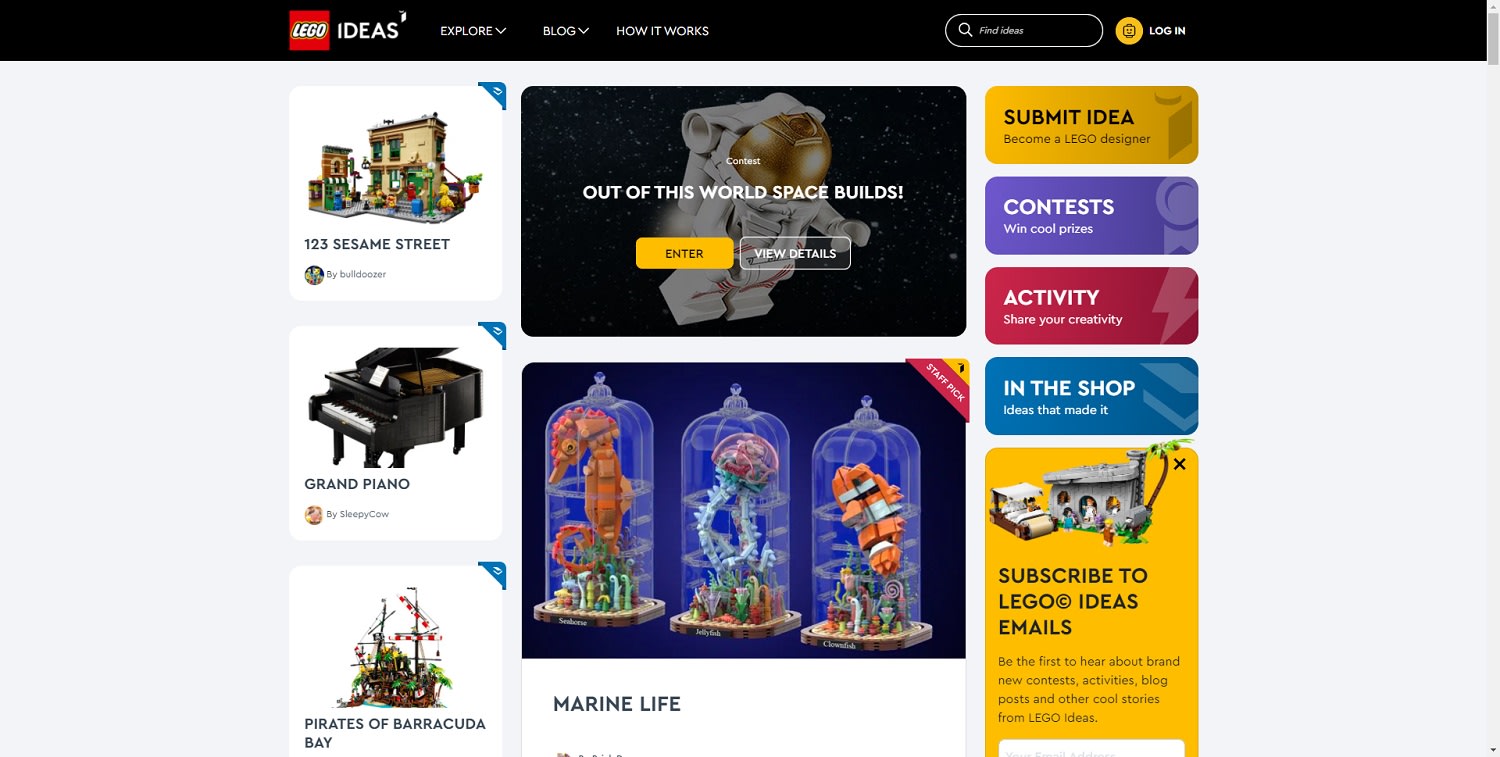
Just look at some of those awesome designs!
No wonder Lego has some of the most loyal customers in the world, regardless of their prices or the inherent danger from those — surprisingly sharp-edged — feet stabbers.
Do you give your customers a chance to contribute? Can you create an online platform — even a Facebook group works — for them to interact with each other?
Create an ecosystem where a new customer has every reason to become a repeat customer. Even if they can’t find something they like, they can give you the design to create it.
This tactic is equally effective in B2B marketing, although you can approach individual companies directly instead.
3. Actively giving back to the community
52% of consumers say that standing for something bigger than just the products, something which aligns with their personal values, impacts their brand choice.
Knowing that their dollars are making a difference contributes to customer satisfaction.
Tyson Foods engages the community and builds brand loyalty with its hunger relief and other charity programs.

It’s especially effective when done in the local community of core customer groups. You can also combine it with a social media marketing campaign to drive the point home.
4. Turning using your product/service into a habit that feels productive
Grammarly’s weekly writing updates are the perfect examples of this. With usage statistics and streaks, it makes it feel like using the products equals progress.

It also highlights the number of mistakes Grammarly helped you fix. And that reminds you why you’re using the product in the first place.
And it isn’t just a thing for SaaS companies. Physical products can also take advantage.
Fitbit created a whole new marketplace by using this tactic. By becoming a crucial part of a healthy habit, many people couldn’t live without it.
My mom is no fitness freak by any means, but she gets super excited about her daily step count.
If you can build in a positive reminder into your product, do so.
5. Giving your customers a platform on social media
Starbucks is one of the biggest brands on Instagram, yet it’s not afraid to lend out that stage to its customers.
Starbucks often “regrams” pictures from loyal customers, creating a positive interaction. It also gives everyone an incentive to share their most picturesque shots of them drinking a latte.
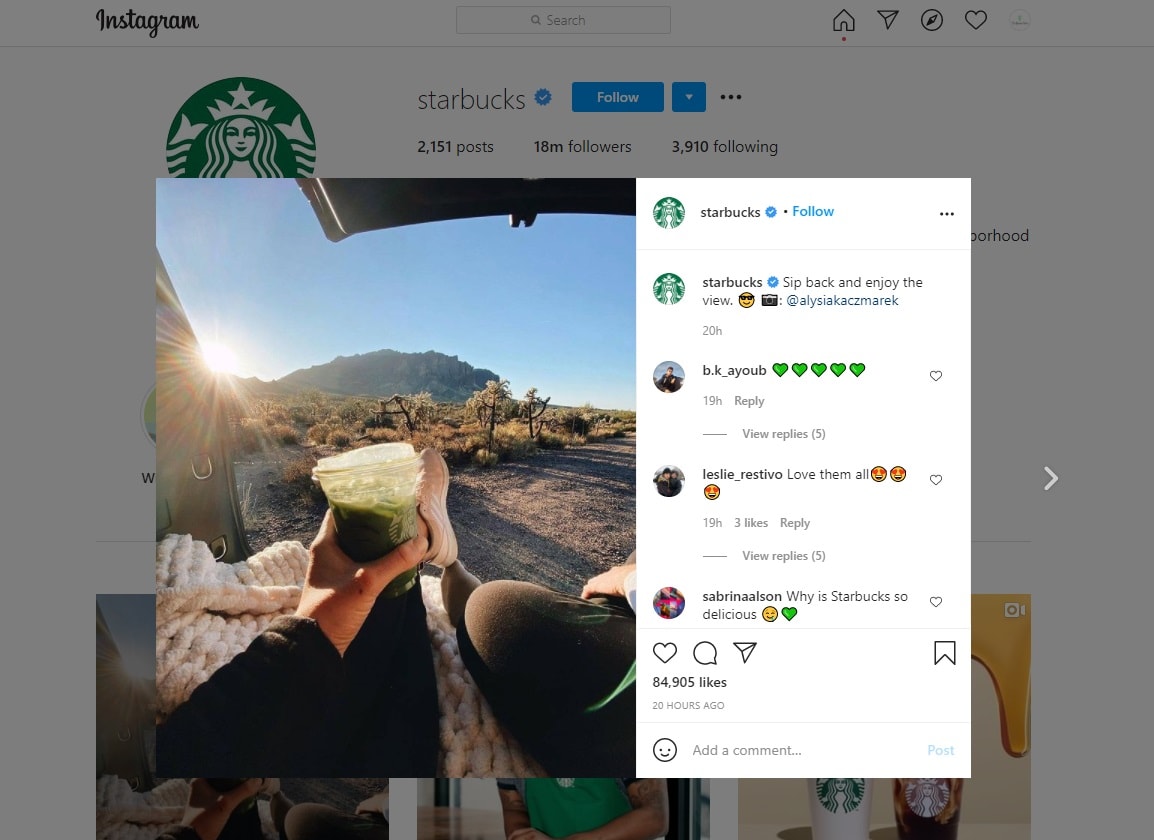
Customer interaction is the key to a relationship marketing strategy on social media. Instead of generic giveaways, focus on letting your actual customers shine.
How to implement a customer relationship marketing strategy with monday.com
The first step towards loyal customers is actively keeping track of them. If you don’t know your customers and their history, how can you take the right action?
A crucial piece of the puzzle is customer relationship management (CRM) software. The monday.com CRM offers all the features you need in a uniquely easy-to-use package.
Plus, use our integrations and automations to build a platform for a better customer experience.
Use our CRM to get full control of your customer relationships
The monday.com CRM connects data from multiple sources to create a unified view of your customers.
See the journey from marketing campaign to prospect, to lead, to repeat customer.

With Shopify and WooCommerce integrations, you can automatically log new purchases. Our API and Apps Framework makes it easy to create integrations for custom solutions.
We also integrate with marketing platforms like Facebook Ads and MailChimp. So you can track the effectiveness of various campaigns.
Track the real customer lifetime value (LTV), and compare it to your marketing costs.
Offer consistent service across platforms by centralizing your data
91% of consumers suggest that omnichannel experiences are either important or critical. And it’s not enough to be on every platform. You need to offer a consistent experience.
For example, you can use our Zendesk integration to sync the customer data between platforms automatically.
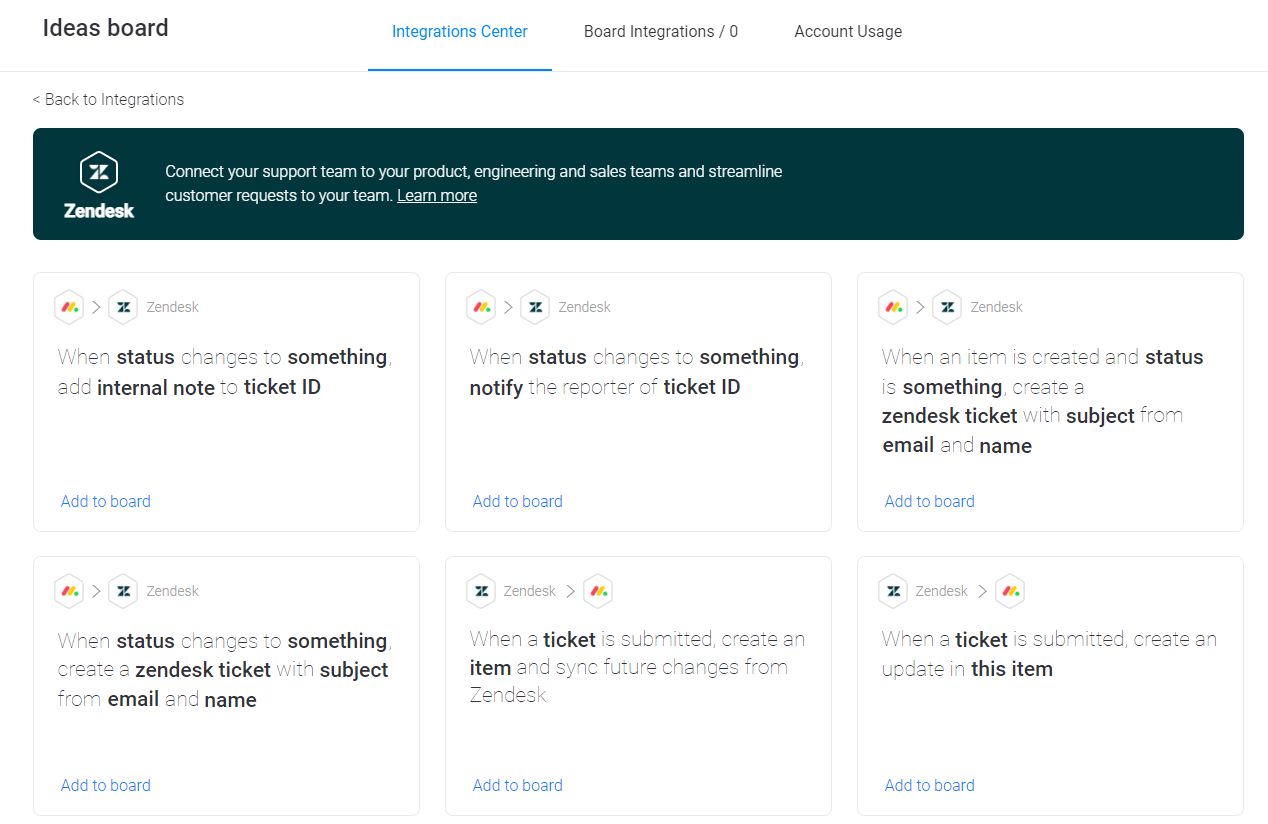
Don’t let a disconnect cause a bad experience.
Improve collaboration with customer service and sales
Marketing can’t be effective if it happens in a vacuum.
In 2020, LinkedIn surveyed sales and marketing leaders on the importance of alignment. A whopping 85% said alignment was the best opportunity for boosting performance.
With monday.com, you can create a platform that integrates data and communication from all your different teams.
You can also use smart automations to reduce information gaps. For example, sending a Slack message after a crucial task status change.
Use the interactive whiteboard to brainstorm and create better relationship marketing campaigns
Do you have a remote or distributed marketing team? The interactive whiteboard app is perfect for brainstorming new campaign ideas.

You can also create shared Kanban boards where everyone — regardless of team — can contribute ideas.
A core tenet of growth hacking is that marketing doesn’t have a monopoly on good ideas. Sometimes the best ideas come from people directly interacting with customers.
Create product improvement suggestion forms to inspire your product team
With monday.com, you can also create suggestion forms that feed directly into a structured database.
Empower your product team with suggestions directly from your customers. Make your customers feel like they matter. It’s a great 2-for-1 deal.
A bigger impact on your bottom line with a smaller investment
In marketing, bringing in new customers gets all the fanfare while delivering worse results.
Loyal customers spend more, and it’s cheaper to convince an existing customer to buy, so you can’t afford to ignore the customer relationship.
So make full use of our CRM and project management capabilities to turn your existing customers into loyal ones.

